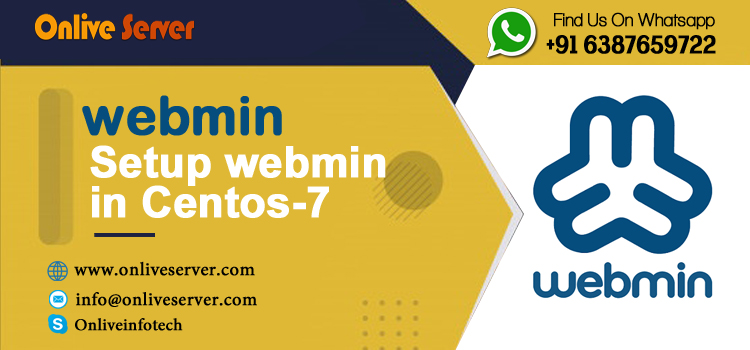
Webmin known as web-based interface for the system administration for linux. Webmin developed by Jamie Cameron and the Webmin community. It also allows you to control many machines through single interface. You can choose any modern web browser to connect your server. With the help Webmin, it allows you to manage your server remotely.
Webim control panel also allows you to edit linux configuration files manually. With the help of Webmin, you can also build operating systems internals such as users, service or configuration files, disk quotas, as well as modify and control open source applications such as Apache or Tomcat, PHP, MySQL, DNS, and file sharing. Webmin is based on Perl run its own process and web server. It is also a BSD like license is freely distributed and modified with commercial and non commercial use.
Webmin is a JavaScript based web server and web-hosting solution for linux/Unix/command line interface. Webmin also allows for controlling many machines through a single interface, or seamless login on other Webmin hosts on the same subnet or LAN. These are mostly the basic configuration requirements of my webserver including; it is up to you to make changes and add other custom plugins that will make your webserver run better.
Here is some basic information to use Webmin Control Panel.
Webmin has an interface to configuration the files and the Webmin server, making it easy to add new function. Due to Webmin’s modular design, it possible for anyone interested to write plugins for desktop configuration. Modules are available to primarily manage just about every aspect of a Linux/Unix system. Some examples:
- You can manage your packages via Webmin by clicking on the system menu item and then software packages. Here you can search for a package to view information about it, install or uninstall new software packages, and even update software packages.
- You can add or delete users by selecting Webmin Users in the menu.
- You can browse or upload files by selecting others and then File Manager.
- You can work in the command line by selecting Others and then Command Shell.
- You can custom configure Webmin by selecting Webmin and then Webmin Configuration.
- You can control what daemons start and stop during system startup and shutdown, access to all run levels, and the ability to add custom applications to startup and shut down.
- After installing the Apache web server, you can add websites by going to servers.
How to access webmin on webmanagement url?
To acces webmin you have to open your web browser and enter the IP address.
Onlive Infotech Security Features of Webmin
Some security features that you might require when running the Webmin Control Panel on your laptop:
Firstly paste entry code on the webmin’s site
Check to see you replaced webmin .
Check for any customized content
The webmin also has a group.config/java . This will default to run your configure in webmin command line. If you’re running linux then an edit command in console.log will allow you to access.
